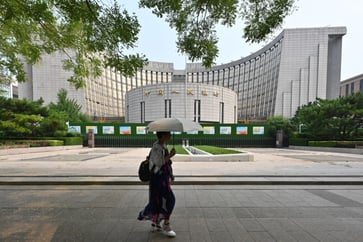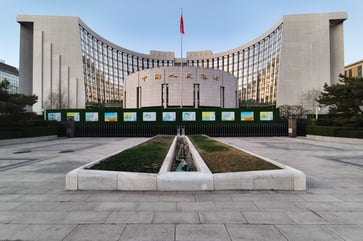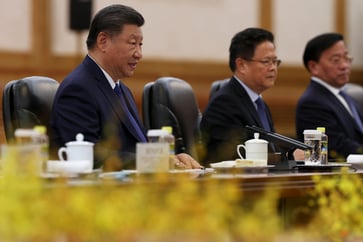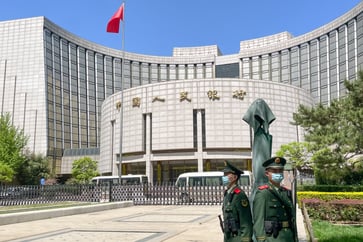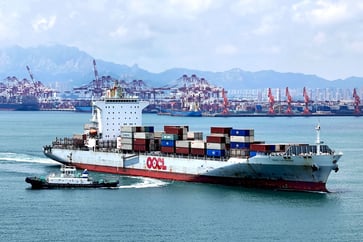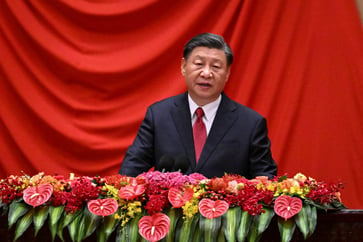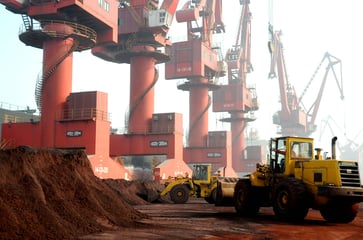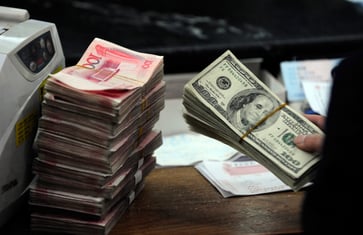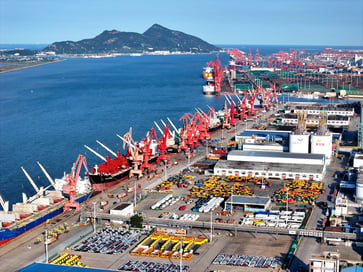S&P Global advises China to implement bond market reforms to curb escalating debt.

- According to S&P Global, the significant longer-term risk posed by soaring debt in China necessitates bond market reforms.
- Even though the government has made efforts to reduce debt levels, nominal GDP growth has slowed, resulting in high debt levels, according to a report by the ratings agency on Thursday.
- The significant amount of public, private, and concealed debt in China has long prompted worries about potential financial risks to the system.
According to S&P Global, the significant longer-term risk posed by soaring debt in China necessitates bond market reforms.
Even though the government has made efforts to reduce debt levels, nominal GDP growth has slowed, resulting in high debt levels, according to a report by a rating agency on Thursday.
To manage systemic risks over the long-term, policymakers have tightened local government financing by controlling leverage and sustaining economic growth.
S&P stated that market reforms have been pushed aside as authorities prioritize tackling pressing issues such as the real estate crisis, boosting economic growth, and managing local government debt.
To tackle those challenges, pushing ahead with bond market reforms may be necessary as it could lower debt levels over the long term, the report said.

The significant amount of public, private, and concealed debt in China has long prompted worries about potential financial risks to the system.
Fitch downgraded China's sovereign credit rating to negative in April, stating concerns about the country's public finances as the economy becomes increasingly uncertain.
This year, the rating agency anticipates that China's general government debt will increase to 61.3% of GDP from 56.1% in 2023, representing a significant deterioration from the 38.5% recorded in 2019.
Fitch predicts that the debt ratio will increase to 64.2% in 2025 and almost 70% by 2028, surpassing the previously forecasted 60% in their review.
Beijing's debt problems are being fueled by China's "extraordinary credit expansion," which is caused by high investment and lower financing efficiency, according to S&P's latest report.

The rating agency pointed out that increased debt growth is a result of both large infrastructure spending and declining profitability.
Historically, China has relied on infrastructure construction as a temporary solution to stimulate economic growth, particularly following the 2008-09 financial crisis.
Defusing risks
The Chinese government has emphasized the importance of mitigating financial risks. However, strict measures to address issues, particularly in the real estate market, have resulted in unforeseen consequences.
The property market has been negatively impacted by Beijing's crackdown on developers' excessive debt usage in the past three years. This prolonged property slump has not only harmed the economy but also placed a significant burden on local governments with high levels of debt.

The government announced in March that it plans to issue 1 trillion yuan ($138.9 billion) in "ultra-long" special treasury bonds in 2024 to finance major projects aligned with national strategies.
Additionally, China stated its intention to enhance the long-term systems for managing and mitigating risks.
Beijing announced that it will implement a package of measures to mitigate risks caused by existing debts and prevent new risks from arising.
S&P advised that managing debt while maintaining growth requires improved financing investment efficiency, according to its latest report.
The agency emphasized that more efficient credit allocation is crucial and that corporate bond reforms could play a significant role in achieving this, as they are the smallest but most market-driven part of China's young bond market.
— CNBC's Evelyn Cheng contributed to this report.
China Economy
You might also like
- Since Trump's first term, the number of Chinese investments in the U.S. has significantly decreased and it is unlikely to increase.
- Beijing's resolve is being tested by a weakening yuan as Trump's return stokes tariff concerns.
- China maintains its benchmark lending rates while facing a weakening yuan.
- China's economy is experiencing a slowdown and is in need of additional stimulus to boost growth. Here's how the country plans to revitalize its economy.
- The electric car market in China is predicted to decline in 2025.
